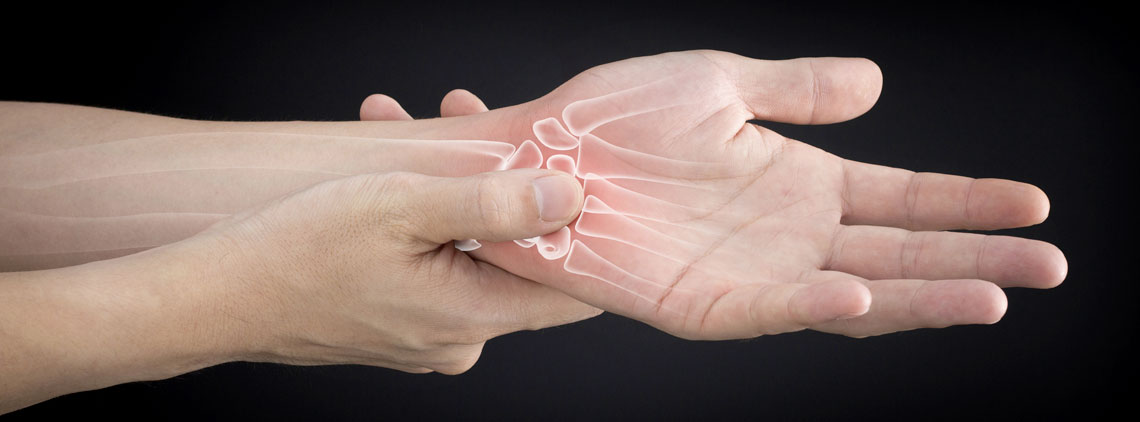
Overview
What is Wrist Tendonitis?
Wrist tendonitis, also called tenosynovitis, is the inflammation of one or more tendons in the wrist. Inflammation is caused due to small tears in the tendon due to repetitive movements. This is a common condition. If you have wrist tendonitis you may have symptoms like pain, swelling, stiffness, redness, or warmth to the wrist. Some report a grinding sensation when they move their tendon. You may experience these symptoms doing actions like opening and closing your hand or rotating the wrist in both directions.
Many times wrist tendonitis occurs in tendons that pass over a bony section of the wrist. Athletes who play tennis, golf, rock climbing, and rowing are at an increased risk of receiving a wrist tendonitis diagnosis.
There is one specific type of wrist tendonitis known as DeQuervain’s Tenosynovitis.
Wrist Anatomy
A tendon is a strong fibrous band of protein that connects the forearm muscle to the hand bone. The tendons slide through smooth sheaths. These allow for low-friction back and forth movement. Tendon sheaths have synovial fluid within the sheath. This is where wrist tendonitis occurs.
Types of Wrist Tendons
There are two types of wrist tendons:
- Extension. The tendon used when bending the wrist backward.
- Flexion. The tendon used when bending the wrist forward.
Nonsurgical Treatment Options for Wrist Tendonitis
During an in-office appointment, we will begin by examining your wrists. Then we may perform a test to stretch a specific tendon to identify the exact source of inflammation. If you have DeQuervain’s tenosynovitis, we will perform a test called Finkelstein’s test. We will ask you to make a fist with your hand and then pull your hand away from your thumb. Finally, we may suggest an X-ray to confirm the diagnosis. There are several treatment options available:
- Splint/Brace. A splint or brace worn during activities helps to minimize strain on your wrist.
- Ice. Place ice where your pain is located for 10-20 minutes. Refrain from placing the ice directly on your skin.
- Anti-Inflammatory Medication. Through the use of anti-inflammatories like ibuprofen and naproxen, you can reduce swelling and relieve your pain.
- Exercise.Exercises build muscle under tension which is helpful while your tendon is healing. Use lighter weights and more repetitions. This is better than using more weight and fewer repetitions.
- Steroid Injection. A stronger anti-inflammatory injection, like a corticosteroid, directly into the wrist can reduce swelling and pain.
If you experience symptoms like numbness and tingling, an increase in pain and swelling, inability to move the wrist, or severe swelling of the hand or wrist, call us immediately.

